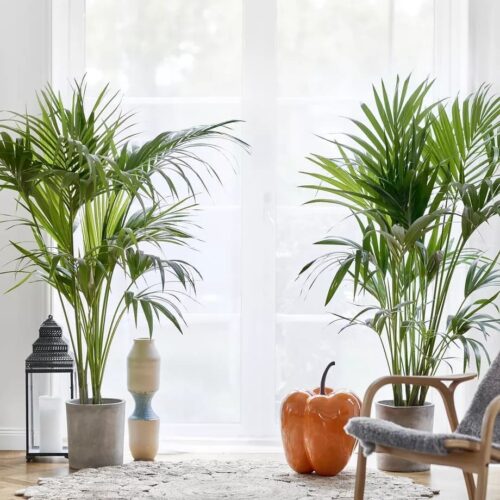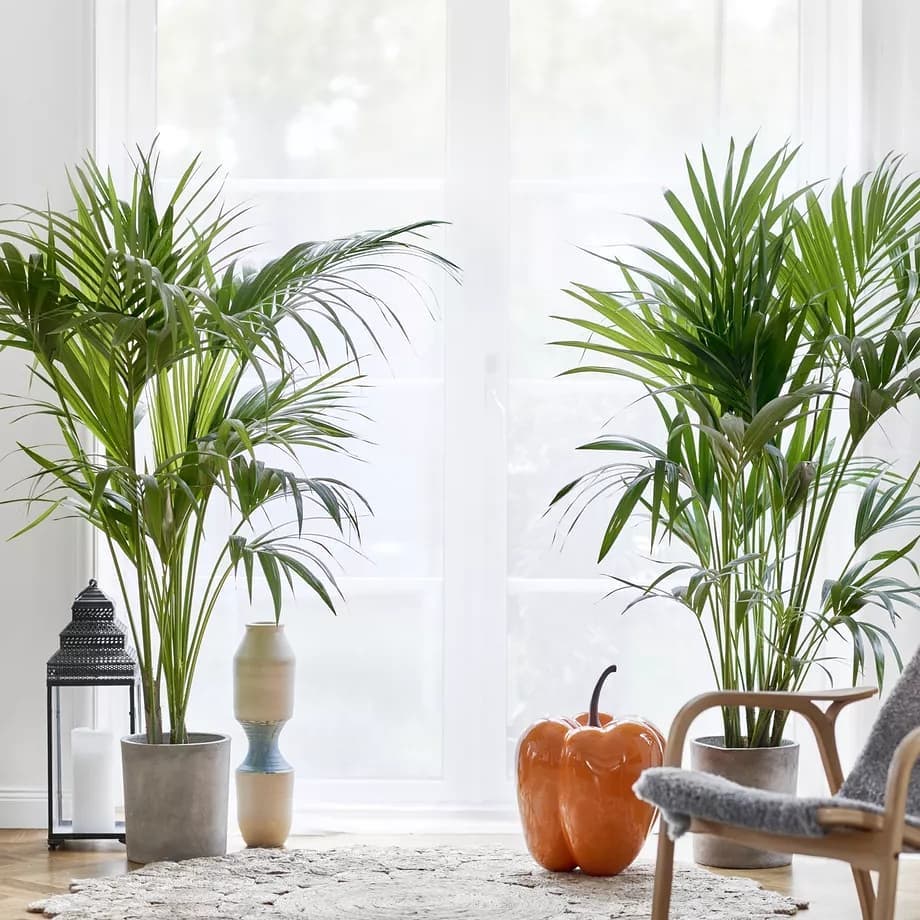Are your Palm Leaves Turning Brown? What are the Common Indoor Palm Problems? Follow our guide to know how to solve them.
Read why your Palm Leaves Turning Brown with Reasons and Solutions in this post and keep this elegant, stylish plant healthy and flourishing. Work out how to find a balance between light, warmth, feeding, and moisture to keep your indoor palm lush and happy.
Palm Leaves Turning Brown Reasons and Solutions

When an indoor palm feels stressed, the most common signs you will see are yellowing or browning of leaves. It can get confusing because these troubles can mean different problems. To fix the problem, you need to understand how and from where the leaves begin to change color.
1. Yellowing of Lower Leaves
Palms are tropical plants requiring bright but indirect sunlight to grow. When you see that the lower leaves on your indoor palm tree are turning yellow, there is a better chance that the palm is not receiving enough sunlight. When the plant is deprived of the minimum sunlight requirement, it cannot produce enough energy and begins to conserve whatever it has. It directs the resources to newer leaves and allows the old ones to turn yellow and fall off.
How to Fix Yellowing of Lower Leaves?
Find a bright, well-lit spot near a glass door, window, or skylight for your palms to sit. The palms will absorb artificial sunlight 40-50 centimeters on top of the foliage. However, keep your palms out of the direct sunlight that can cause burning of the leaves.
2. Yellowing Leaves All Over
Leaves can turn yellow from an inconsistent watering schedule. As palms are native to the tropical climate of Madagascar, they are designed to thrive in torrential rain and heavy storms. Your palm should not be overwatered or underwatered, or else the leaves will turn yellow all over.
How to Fix Yellowing of Leaves?
Do not allow the palm’s soil to dry out entirely between the watering sessions. You need to water the plant just enough for the container to start draining. Do not soak the soil and then allow it to become bone dry.
Water often in summer and spring but cut back during autumn and winter. If the climate is hot and dry, you can also mist spray the foliage 2-5 times a day. It will keep the palms happy and calm and keep pests at bay.
3. Yellowing Leaves with Brown Tips
If the tips of the palm fronds are turning brown and then yellow, it may indicate that the plant needs more humidity and/or some more water. Although palm trees love the heat and warmth, they do not prefer sitting in rooms with air conditioners and heaters that wick moisture from the surroundings.
How to Fix Yellowing of Leaves with Brown Tips?
A general guide is to keep your palm trees at average room temperature. Make sure you are not allowing the soil to dry out entirely between the watering sessions. Also, you may want to consider installing a humidifier or a pebble tray to provide some extra humidity.
During winter, you may want to move the plant to a warmer spot if the room uses a heater to keep warm.
4. Brown, Crispy Leaves
Palm trees prefer bright but indirect sunlight, similar to their native growing conditions in the rainforest canopy. If your palm tree receives too much direct sunlight, that can cause the leaves to turn brown and crispy.
How to Fix Leaves when Brown and Crispy?
When you start noticing crispy, brown leaves on your palm fronds, begin evaluating the light conditions and make changes. Place your palm tree in a spot that receives bright but indirect or filtered sunlight. However, it does not mean the plant will thrive well in total darkness with no natural sunlight. If the room does not receive natural sunlight, you can also get an artificial/grow light. Grow your palms next to a bright window without exposure to direct sunlight.
5. Yellowing Leaves with Brown Spots
Scale, mealybugs, or spider mites are common pests that trouble indoor palms. Scale looks like tiny spots on the top side of the fronds, while spider mites look like tiny speckles. Mealybugs look like small cotton dots, and you can notice them on the underside of the leaves. If you begin to see little brown spots on the leaves and discoloring them, it may be possible that the plant has fallen prey to mealybugs or spider mites.
How to Fix Yellowing Leaves with Brown Spots?
Check out sticky, clear residue or webbing on the stems and leaves. When you spot any tiny spots on the leaves, you may remove as many as possible using a pair of tweezers. Then, use a hosepipe to water your plant and eliminate any stragglers. You can also mist your plant with soap and water or scrub it down with a toothbrush.
Additionally, always take the palm trees outdoors when treating them for pests and diseases.
6. Yellowing Leaves with No Pattern
If the palm has yellow leaves and no pattern that does not indicate any other trouble, it may be because of a nutrient deficiency. If the palm tree lacks magnesium, you can also notice discoloration of leaves and a slower growth rate.
How to Fix Yellowing Leaves with No Pattern
Use a mild liquid fertilizer with the necessary nutrients to feed your indoor palms. One of the most common errors people make while feeding indoor palms is burning the roots with excessive fertilizer. When roots are bound and left exposed to less sunlight and heat, they require less fertilizer. Choose water-soluble or controlled-release pellets or slow-release to feed the plant 3-4 times every year.



